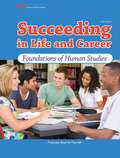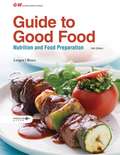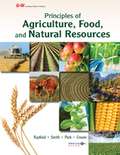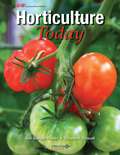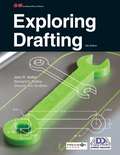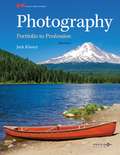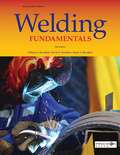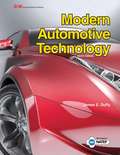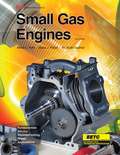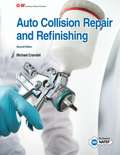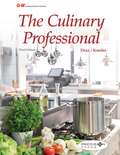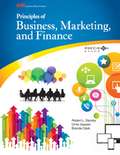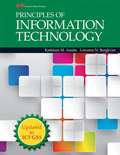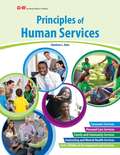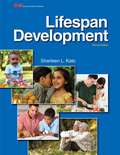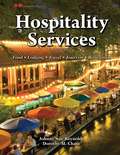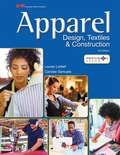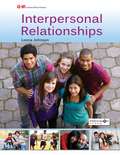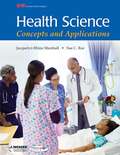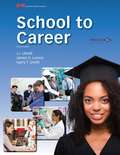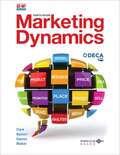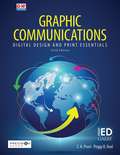- Table View
- List View
More NIMAC books are available at www.nimac.us. If you find your title in the NIMAC and not in Bookshare then please contact us to request it.
Succeeding in Life and Career, Foundations of Human Studies
by Frances Baynor ParnellSucceeding in Life and Career is an advanced comprehensive text designed to help teens adjust to change, especially as they become young adults. A lifespan development chapter provides understanding of how people change over time, from newborn to older adult. Career readiness is stressed, and each of the 16 career clusters is explored along with related jobs and their requirements for success. Skills development, financial literacy, healthy lifestyles, housing, and transportation topics are also included. Students gain hands-on experience building a portfolio by completing chapter projects, preparing them to create employment portfolios in the future. Critical thinking features found throughout the book develop student college and career readiness skills. Classroom learning and FCCLA participation are encouraged through chapter ending activities.
Guide to Good Food: Nutrition and Food Preparation
by Velda L. Largen Deborah L. BenceGuide to Good Food: Nutrition and Food Preparation employs current nutrition information to inform students as they learn the roles nutrients play in their health throughout the life cycle. Comprehensive content on food selection, storage, preparation, and service gives students the tools needed to recognize and follow a nutritionally balanced diet, while animations bring content to life. Menus and recipes with easy-to-follow, step-by-step directions, and nutritional analyses are also included. Food-related careers are profiled in every chapter. * Enhanced visuals program employs infographics and images to emphasize content and improve recall. * The Foods of the World section explores the culture and cuisine of over 30 countries. * Students can complete and submit review questions digitally, enhancing instructor's assessment of students' comprehension and reducing paper waste.
Principles of Agriculture, Food, and Natural Resources: Applied Agriscience
by John S. Rayfield Kasee L. Smith Travis D. ParkNIMAC-sourced textbook
Horticulture Today
by Jodi Songer Riedel Elizabeth DriscollAn all-new option for introductory horticulture or plant science courses, Horticulture Today engages students with practical information they can use and hands-on activities they perform. Written by two dynamic agriculture educators, the text presents a contemporary overview of the horticulture industry, then provides thorough coverage of plant science, horticultural practices, landscape design and maintenance, and integrated pest management. In developing an appreciation for the diversity and global context of horticulture, Horticulture Today helps students to develop literacy in Green Industry careers as well as the skills they will need to succeed.
Exploring Drafting: Teaching Package Worksheets
by John R. Walker Bernard D. Mathis Shauna Ann ScribnerNIMAC-sourced textbook
Architecture: Residential Drafting and Design (Twelfth Edition)
by Clois E. Kicklighter W. Scott Thomas Joan C. KicklighterNIMAC-sourced textbook
Welding Fundamentals
by William A. Bowditch Kevin E. Bowditch Mark A. BowditchWelding Fundamentals is designed to provide students with a strong understanding of the underlying theory and skills required for successful welding, with a strong emphasis on safety. It provides all of the information needed to help students develop proficiency with the most common welding processes (including GTAW, GMAW, FCAW, SMAW, and oxyfuel welding), thermal cutting, basic print reading and weld symbology, and joint design and fit up. The text also introduces students to weld inspection and testing. Covers all of the key indicators for AWS SENSE Level-1 certification, so the book can be used in all courses leading to SENSE Level-1 certification. This book is designed so that sections of the book can be taught in any order, making the book easily adaptable to any course.
Small Gas Engines
by Alfred C. Roth Blake J. Fisher W. Scott GauthierThe Small Gas Engines textbook covers all areas of engine theory and service. The book includes extensive information on L-head, overhead valve, and overhead cam engine designs. The troubleshooting and engine service information in the book is generalized rather than manufacturer-specific so that it can be applied to a wide range of engine designs from different manufacturers. The book contains all of the service procedures needed to completely rebuild a small, single-cylinder gas engine. The theory sections of the book give the reader a sound understanding of the science involved in four-stroke and two-stroke internal combustion cycles in easy-to-understand language. They also provide the reader with clear explanations of the role of basic engine components, the benefits and operation of various engine designs, and up-to-date emission control information. Review questions at the end of each chapter reinforce the important information presented in that chapter. The suggested activities at the end of each chapter are hands on and research activities that help the students apply what they have learned in the text and expand their knowledge.
The Culinary Professional (Third Edition)
by John Draz Christopher KoetkeThe Culinary Professional is the first step on the path to a career in the culinary field. It will provide you with the necessary skills for more advanced class work and expose you to the world of professional cooking. The foodservice industry, which employs most culinary professionals, is large and diverse. This text begins with an introduction to that industry's opportunities and challenges. You will learn what it takes to succeed in this growing field. Before you begin to cook, you should know how to be safe in the kitchen. Early chapters will explain how to protect your health and safety as well as that of your coworkers and customers. You will learn how to find a job and what is expected of you as an employee. A new chapter explores concepts and practices that promote sustainability in the kitchen. Chefs use many tools and select from an immense array of ingredients when preparing dishes. The Culinary Professional supplies a generous number of photos and clear descriptions of the tools and ingredients used in the professional kitchen. Step-by-step directions for basic culinary skills and cooking methods appear throughout the text. The presentation of your food is nearly as important as the preparation, and for this reason, a full chapter covers the principles of plating, design, and garnishing. A new chapter explains how to analyze cuisines and explores various international cuisines. Successful chefs must be able to do more than simply prepare delicious dishes. You will learn about the importance of working with other departments and managing resources. Welcome to the first step on your path to a career in culinary!
Principles of Business, Marketing, and Finance
by Robert L. Dansby Chris Gassen Brenda ClarkNIMAC-sourced textbook
Principles of Information Technology
by Kathleen M. Austin Lorraine N. BergkvistPrinciples of Information Technology presents basic principles and concepts about information technology to help students become more valuable employees, better citizens, and knowledgeable consumers. Written specifically for high school students, this text maps to the IC3 Digital Literacy Certification standards. By studying this text, students can prepare for taking the Certiport IC3 Digital Literacy Certification exams. IC3 Digital Literacy Certification is a well-respected and internationally recognized credential.
Lifespan Development
by Sharleen L. KatoLifespan Development is the first textbook on this topic to be targeted to the high school student. In it, students learn about the different stages of development that people pass through as they age. From newborn to older adulthood, people continue to develop and change physically, cognitively, socially, and emotionally. Features covering cultural diversity, health, and safety are included throughout the text. Core Skills activities reinforce writing, speaking, math, and career readiness skills. * The developmental theories of Erikson, Piaget, Vygotsky, and Kohlberg are highlighted. * A unit is dedicated to career paths in education and training and human services. * Case studies are included in every chapter to help students relate classroom learning to the real world.
Hospitality Services: Food And Lodging Examview Assessment Suite
by Johnny Sue Reynolds Dorothy M. ChaseNIMAC-sourced textbook
Apparel: Design, Textiles And Construction
by Louise A. Liddell Carolee S. SamuelsNIMAC-sourced textbook
Health Science: Concepts and Applications
by Jacquelyn Rhine Marshall Sue C. Roe Linda RomanoNIMAC-sourced textbook
Marketing Dynamics
by Brenda Clark Cynthia Gendall Basteri Chris Gassen Michelle WalkerNIMAC-sourced textbook
Graphic Communications: Digital Design And Print Essentials
by Z. A. Prust Peggy B. DealNIMAC-sourced textbook
